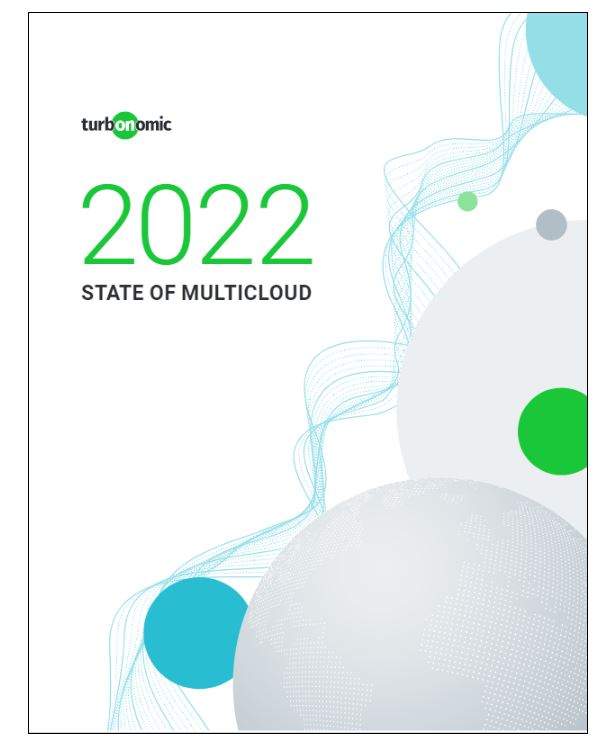Improve Performance with Turbonomic Application Resource Management
Time to read: 10 minutes
In today’s digital economy, the client experience is ultimately driven by applications – and as they underpin the business, workloads cannot slow down with a loss of business, let alone crash entirely.
This is complicated by businesses needing to be able to rapidly scale up and down based on sometimes unpredictable waves of demand that can occasionally take the shape of severe spikes.
Ensuring Application Performance
To overcome this obstacle allocation of computing resources must be continually adjusted so that application performance is always high enough to satisfy client demand, but also so that businesses don’t pay for unused capacity or waste data centre energy.
Digital enterprises must be able to identify when apps are performing poorly, work out the cause, and do something to fix the issue and increase app performance. At the same time, efficient IT operations demand that utilisation is tracked so unused capacity can be removed. The ultimate goal is to automate a trusted process – from analysis, identification, and recommendations to resolution.
Turbonomic (now an IBM company) developed its Application Resource Management platform to assure customers’ application performance by dynamically resourcing applications across multicloud environments.
What Factors Are Influencing IT Decisions in 2022?
The fourth instalment of Turbomonic’s “State of the Multicloud” report identified the roles of key factors in influencing IT decisions in 2022.
The survey polled the opinions of almost 700 IT professionals driving infrastructure, operations and application development.
The 2022 report analysed the research data by comparing “leaders” versus those “on par with the majority” versus “laggards.”
Respondents were asked to self-identify their organisations in terms of their approach to leveraging new technologies to advance business goals.
Turbonomic interviewed respondents on the impact of:
- sustainability
- application modernisation
- adoption of cloud
- use of multicloud environments
- containers
- and the challenge of skills shortages.

Turbonomic State of Multicloud Report 2022
To download your copy of the report, click here to visit the Turbonomic site.

1) Sustainability
Businesses are under increasing pressure to operate in a more environmentally sustainable way. With technology playing a critical role in today’s digital economy, 62% of IT executives consider having a sustainability strategy essential to be competitive in the future and another 22% think it will be a requirement.
The percentage of organisations that acknowledge the importance of sustainability but are still only exploring how to develop a strategy is fairly consistent across leaders, on-par and laggards.
However, the survey identified distinctions where organisations are executing against a strategy and goals with 57% of leaders executing against a climate resiliency strategy compared to 10% of laggards.

2) Application Modernisation
Organisations were asked which approaches to application modernisation they were following – from simple ‘lift and shift’ of apps to the cloud, re-architecting apps with Platform-as-a-Service (PaaS) services, to refactoring apps to take advantage of cloud-native technologies such as containers and replacing apps with subscription-based SaaS offerings.
Rehosting applications (lift and shift) remains a popular strategy for most companies, even those in the leaders category. This suggests that the motivation to move away from managing data centres is greater than incurring additional costs by not first optimising applications.
Balancing this, 30% of organisations are retaining existing apps where the investment required to refactor or repurchase a SaaS alternative is too great.
Application modernisation can be complex and each app needs to be evaluated on its own merits. Part of this process must include assessing the impact of applications on the business. The survey asked how companies measured app performance – not surprisingly, 67% of leaders measure application performance in contrast to only 44% of laggards doing so.
Most digital organisations recognise that customer experience is dependent on application performance – with zero downtime being expected. Overall, 61% of respondents use response time or throughput to measure application performance and 23% measure business revenue generated via its applications.
Almost a quarter of the laggard group don’t measure app performance at all and more disturbingly, they have no plans to change that. This suggests that the gap between leaders and laggards will increase.

3) Adoption of Cloud
While public clouds offer agility and the tools to focus on business differentiation, they also introduce significant complexity. AWS and Azure each have over 200 cloud services and it requires significant knowledge and skill-building to effectively navigate, evaluate, and leverage these services. Only leaders feel they have the skills to focus on leveraging different cloud services to improve application performance.
60% of organisations are running production workloads in a public cloud; among leaders that jumps to 75%. When asked where their organisation was on its journey to business transformation in the public cloud, 16% of all respondents reported that they were still in the evaluation stage with only 7% executing a cloud-first strategy with business-critical applications leveraging cloud-native, PaaS, and other non-differentiating services provided by cloud service providers.

4) Use of Multicloud Environments
Companies are expanding their use of a mix of on-premises, dedicated private clouds, and multiple public clouds to meet infrastructure requirements and accelerate innovation.
Turbonomic found that overall, the primary driver for multicloud is to guarantee availability, but for leaders, it’s more about leveraging different application services available in different environments (e.g. AI/ML, big data analytics, etc.)
The primary barrier to moving workloads freely between platforms is the ability for application components to be fully portable, but there are advancements in technology that provide more flexibility.

5) Role of Containers
Containers are the building blocks of the modern application, and their portability is a key enabler in implementing multicloud.
In the 2022 survey, 46% of organisations overall – and 60% of leaders – are running containers in production. This is a positive sign that companies are overcoming the challenges around managing the complexity of containerised applications with platforms such as Red Hat OpenShift playing an increased role.
Respondents that are running containers are almost equally split between public cloud (45%) and on-premises (40%), although where companies are using bare metal servers on-premises is preferred (19%) versus 7% for public cloud bare metal.

6) Skills Shortages
Difficulty in hiring skilled staff is the leading challenge for organisations continuously assuring application performance. The survey data reflects a skills shortage at a time when the digital transformation work is increasing.
The coronavirus pandemic accelerated the need to launch or improve digital applications and services, which requires that an organisation have the skills and resources to implement modern cloud and cloud-native technologies.
Leaders are finding this a bigger challenge than other organisations due to the number of transformational initiatives they are driving. The skills shortage is compelling organisations to re-assess the role of automation to augment their workforce. The operational efficiency gains allow teams to focus on innovation and higher-value work.
Get the Turbonomic State of Multicloud Report Now
To download your copy of the report, click here to visit the Turbonomic site.
Read more like this

Compliance
DORA or not to DORA – What Next for UK Banks?
DORA Recap: What, Where & Why Firstly, it’s critical to know that DORA is a benchmark piece of regulation that…

About CSI
Whistlebrook and CSI partnership
Financial institutions can consume Whistlebrook’s SaaS applications through compliant, secure, cloud service offerings.

Storage and Backup
A Buying Guide to Finding the Best Storage Solution for Your Business
Find the right storage for your company.
Ready to talk?
Get in touch today to discuss your IT challenges and goals. No matter what’s happening in your IT environment right now, discover how our experts can help your business discover its competitive edge.